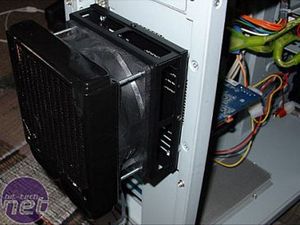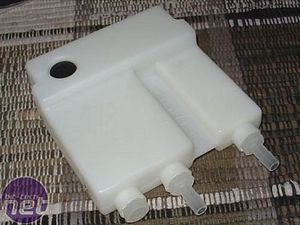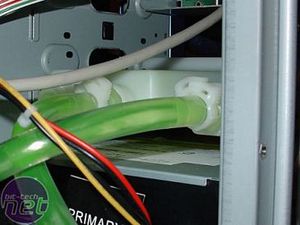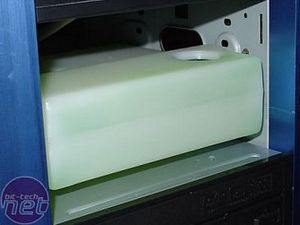
The components - II

To cool down the water circulating the system Corsair chose a 120mm radiator, an excellent choice as it allows good performance at low noise levels - but it does introduce as many problems as it solves, the most pressing being where you mount it in an average case.

Corsair's answer is that you don't mount it inside, you can mount it outside on your case's 120mm exhaust port. This does provide a problem though - relatively few cases have a 120mm exhaust and if you don't have one, you'll have to get creative! It is possible to install the provided mounting bracket on some smaller exhaust ports, but this could lead to conflicts between the radiator and cabling.
The kit provided to mount the radiator is fairly simple to put in place, but it prevents you from having an exhaust fan at the back of your case, and looks dire! The manual states that 'You won't need an exhaust fan anymore, there'll no longer be any CPU heat to expell'. Frankly I don't think that's on. The truth is I don't need water cooling, I'm an enthusiast trying to get the most out of my system - no exhaust fan will mean higher system temperatures and that could mean compromised performance. I noted a four degree increase in the temperature of the northbridge on my MSI K8N Neo Platinum when I switched from air cooling with an exhaust fan to this kit without one.
Whilst the looks might not bother some - including me, if I'm honest - there is a reason that companies like CoolerMaster go to so much effort when making stylish cases!


The reservoir supplied with the kit was a pleasure to use, it slides into a spare 5.25" bay (preferably one above your CPU so it's at the highest point in the system and will collect air). It's filled by pulling it out the front of your case by an inch or two and pouring straight into it. Simple and easy, I like it.


MSI MPG Velox 100R Chassis Review
October 14 2021 | 15:04








Want to comment? Please log in.